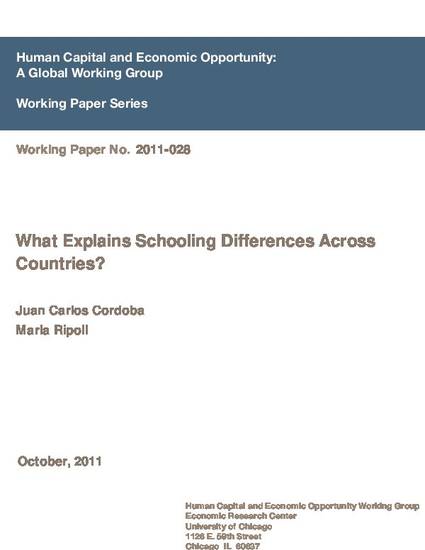
Article
What explains schooling differences across countries?
Journal of Monetary Economics
Document Type
Article
Disciplines
Publication Version
Submitted Manuscript
Publication Date
3-1-2013
DOI
10.1016/j.jmoneco.2012.12.005
Abstract
This paper provides a theory that explains the cross-country distribution of average years of schooling, as well as the so called human capital premium puzzle. In our theory, credit frictions as well as differences in access to public education, fertility and mortality turn out to be the key reasons why schooling differs across countries. Differences in growth rates and in wages are second order.
Copyright Owner
Elsevier B.V.
Copyright Date
2013
Language
en
File Format
application/pdf
Citation Information
Juan Carlos Cordoba and Marla Ripoll. "What explains schooling differences across countries?" Journal of Monetary Economics Vol. 60 Iss. 2 (2013) p. 184 - 202 Available at: http://works.bepress.com/juancarlos-cordoba/10/

NOTICE: this is the author’s version of a work that was accepted for publication in Journal of Monetary Economics. Changes resulting from the publishing process, such as peer review, editing, corrections, structural formatting, and other quality control mechanisms may not be reflected in this document. Changes may have been made to this work since it was submitted for publication. A definitive version was subsequently published in Journal of Monetary Economics, [60, 2, (2013)] DOI: 10.1016/j.jmoneco.2012.12.005